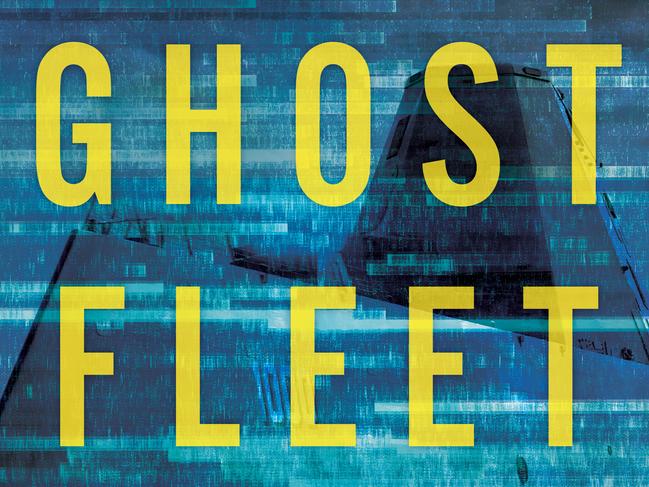Singer and Cole’s Ghost Fleet imagines the next global conflict
Certainly, Ghost Fleet can claim to be useful in highlighting US complacency over its technological vulnerabilities.

For all the ink spilled on the potential for war between the US and China — though to recast a maxim of Winston Churchill’s, better ink than blood — few have gone to the lengths of PW Singer and August Cole in imagining the granular technological detail of what such a conflict might look like.
They are well qualified for the task. Singer has written several excellent nonfiction works in the past decade, including Wired for War and Cybersecurity and Cyberwar. Cole is a former defence writer for The Wall Street Journal. Both are attached to prominent think tanks in Washington, DC.
In Ghost Fleet — inspired by Tom Clancy’s 1986 novel Red Storm Rising, which envisioned a war between the US and the Soviets — Singer and Cole have produced a work of what they call “useful fiction”. (One presumes they don’t mean to imply other fiction is useless.)
A dirty bomb has gone off in Dhahran, Saudi Arabia, driving oil prices sky high and throwing international politics into turmoil. The US has become a major energy exporter to China, which has deposed the Communist Party for a technocratic alliance of business and military figures called the Directorate. The Chinese then discover a huge gas deposit in the Mariana Trench and launch a surprise attack across cyberspace, space and sea to take control of the Pacific Ocean west of Hawaii.
Energy insecurity is a plausible trigger for this fictional conflict, one shared with Clancy’s novel and similar to the conditions that sparked the Pacific War between Japan and the US.
Certainly this novel can claim to being useful, especially in highlighting American complacency about its technological vulnerabilities.
For example, when China exploits the ubiquity of the microchips it manufactures via embedded backdoors for its hackers, the potential chaos in everything from fighter jets and GPS to home appliances is eye-opening. The story also features credible extrapolations of present technological trends: it foreshadows drones of every kind, Google Glass-like devices, stimulants and the military use of electric rail guns. (Helpfully, the authors provide more than 370 endnotes.)
But as a work of fiction Ghost Fleet is less successful. The characters are for the most part military protagonists (no stirring speeches from the White House here) who do not generate more than modest interest in their fates. The American — and Chinese-American — characters show some nuance, but the Directorate seems to be staffed with-two dimensional, Sun Tzu-quoting cut-outs. A huge amount of exposition takes place via dialogue, rendering much of it unrealistic and causing key plot points to be easily missed. Nonetheless, it includes some interesting aspects for Australian readers: from the imagined impact on the commodity trade and the political disintegration of the Indonesian archipelago, to an irreverent Australian billionaire cum space pirate (who Singer says is a composite character).
Presumably the authors have attempted this project as a work of fiction to spread their message about American military hubris and technological complacency outside the DC beltway.
But an alternative reading of this cautionary tale is possible. As the US has achieved energy independence in recent years, after decades of anxiety about its reliance on oil exports, it would do well to consider the insecurity that other nations continue to face, and continue its commitment to Persian Gulf stability and open sea lanes. Technological contests are fun to think about, but as Sun Tzu says, “to win without fighting is best”.
Justin Burke is a journalist on The Australian and a graduate of the US Studies Centre at the University of Sydney.
Ghost Fleet: A Novel of the Next World War
By PW Singer and August Cole
Houghton Mifflin Harcourt, 404pp, $US28




To join the conversation, please log in. Don't have an account? Register
Join the conversation, you are commenting as Logout